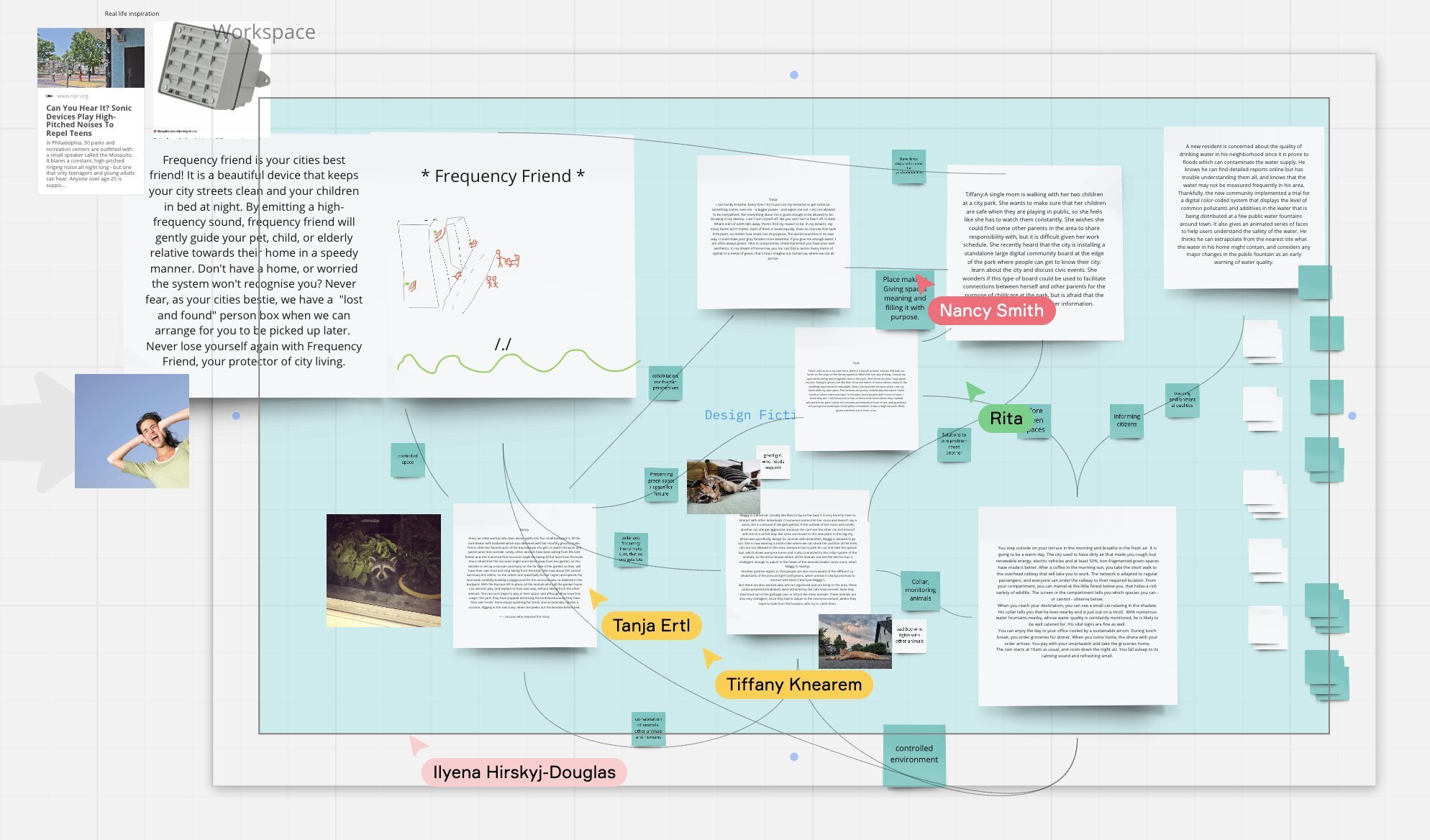IMAGINING ETHICAL SMART CITIES THROUGH DESIGN FICTIONS
This one-day Design Fiction workshop, organized with Tanja Ertl, Konstantin Aal, Franziska Tachtler, and Laura Scheepmaker aims to provide a forum for researchers, practitioners, and activists to discuss and extend current concepts regarding smart cities creatively. During this workshop participants engaged in speculative design fiction methods to imagine new, holistic, and sustainable approaches to smart cities, including a broad spectrum of vulnerable stakeholders who currently have no representation or are under-represented in the process of developing new technologized environments.
Utilizing Miro to collaborate online
The ongoing trend towards increasing urbanization is evident and already well-documented. According to recent studies, most of the world's population is now living in urban areas. Concomitantly, digitalization has found its way into our daily life and other areas such as mental health, health, mobility, learning, and community-building. A discussion about the meaning and definition of “smart” in the context of cities and urban areas remains often functional but more and more scholars criticize concepts that focus on ubiquitous digital automation of infrastructures and services instead of solving citizens' problems. Understanding city dwellers only as consumers and cities only as markets disregards citizens' needs, their actual use of technologies, and other informal (social) practices, and it sometimes even violates their civil rights. These scholars and activists call for a more political, sociological, and anthropological focus on cities, for discussions about ethics and values in the development of technologies, and about governance of urban spaces. Most of all, they call for a bottom-up, open, needs-centered, civil-society-driven approach to the design and development of smart cities.
How can we imagine ethical smart cities?
With the further establishment of the "Internet of Things (IoT), Big Data Analytics, or High-Speed Networks," it is envisaged that everyone and everything will be connected. Humans, animals, and nature itself are all part of this ever-expanding network. Current developments show that it is likely that interactions between these stakeholders and technologies will only grow in frequency and complexity in the future. Especially the needs and interests of marginalized groups, for instance, refugees or children, are often not taken into account in city design, resulting in increasing discrimination. Also often not considered are nature and its multiple species. Understanding the metropole as a holistic reciprocal system through the design of human- and animal-centered technological interventions and research methodologies, Human-Computer Interaction, and Animal-Computer Interaction (ACI) address the increasing interconnection between humans and/or animals and technologies. Especially ACI researchers have pointed out how their field could provide more inclusive models that broaden participation to animals and diverse humans in the development of sustainable, multispecies environments.
More Info
Additional info on this project: https://margins-in-hci.tech
This design workshop was part of the International Conference on Communities and Technologies 2021.





